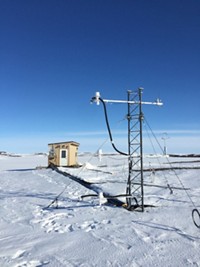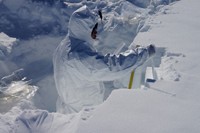Advertisement
Grab your lab coat. Let's get started
Welcome!
Welcome!
Create an account below to get 6 C&EN articles per month, receive newsletters and more - all free.
It seems this is your first time logging in online. Please enter the following information to continue.
As an ACS member you automatically get access to this site. All we need is few more details to create your reading experience.
Not you? Sign in with a different account.
Not you? Sign in with a different account.
ERROR 1
ERROR 1
ERROR 2
ERROR 2
ERROR 2
ERROR 2
ERROR 2
Password and Confirm password must match.
If you have an ACS member number, please enter it here so we can link this account to your membership. (optional)
ERROR 2
ACS values your privacy. By submitting your information, you are gaining access to C&EN and subscribing to our weekly newsletter. We use the information you provide to make your reading experience better, and we will never sell your data to third party members.
Pollution
Tellurium contamination, on the rise, travels to remote areas from industrial sources
As demand for the rare element grows, researchers trace the history of long-range tellurium deposition
by Emma Hiolski
May 15, 2018

Human activity has contributed to a widespread rise in tellurium contamination over the past century, according to a new study (Environ. Sci. Technol. 2018, DOI: 10.1021/acs.est.7b06242). Tellurium from industrial sources, including metal smelting and coal burning, contaminates not only the local environment but also distant, remote areas, the study shows. This increased deposition and long-range transport could make tellurium an emerging contaminant of concern, the authors say.
Tellurium is toxic in some forms, and occurs naturally in the Earth’s crust and oceans at very low concentrations. Most of the tellurium produced for industrial use, such as for solar panels, is gathered as a by-product of copper smelting. This production process is inefficient, losing almost 90% of the tellurium to tailings and the atmosphere, says co-lead author Jane L. Kirk of Environment & Climate Change Canada’s Aquatic Contaminants Research Division.
Kirk, Johan A. Wiklund, and their colleagues analyzed 22 sediment cores from lakes throughout Canada to trace deposition of tellurium over the past century. Tellurium deposition increased near industrial sources, including a 100-fold increase near a copper-zinc smelter in Manitoba after it opened in 1930. Tellurium contamination in lakes in remote Ontario far from industrial sources also increased up to 10-fold above preindustrial levels.
Tellurium deposition may continue to grow, Kirk says, due to increases in global coal burning and rising demand for tellurium in the electronics sector: Worldwide tellurium production grew fivefold between 2000 and 2010. Beyond improving tellurium production efficiency, future work is needed to understand how far tellurium travels and whether it accumulates in aquatic food webs, Kirk says.




Join the conversation
Contact the reporter
Submit a Letter to the Editor for publication
Engage with us on Twitter